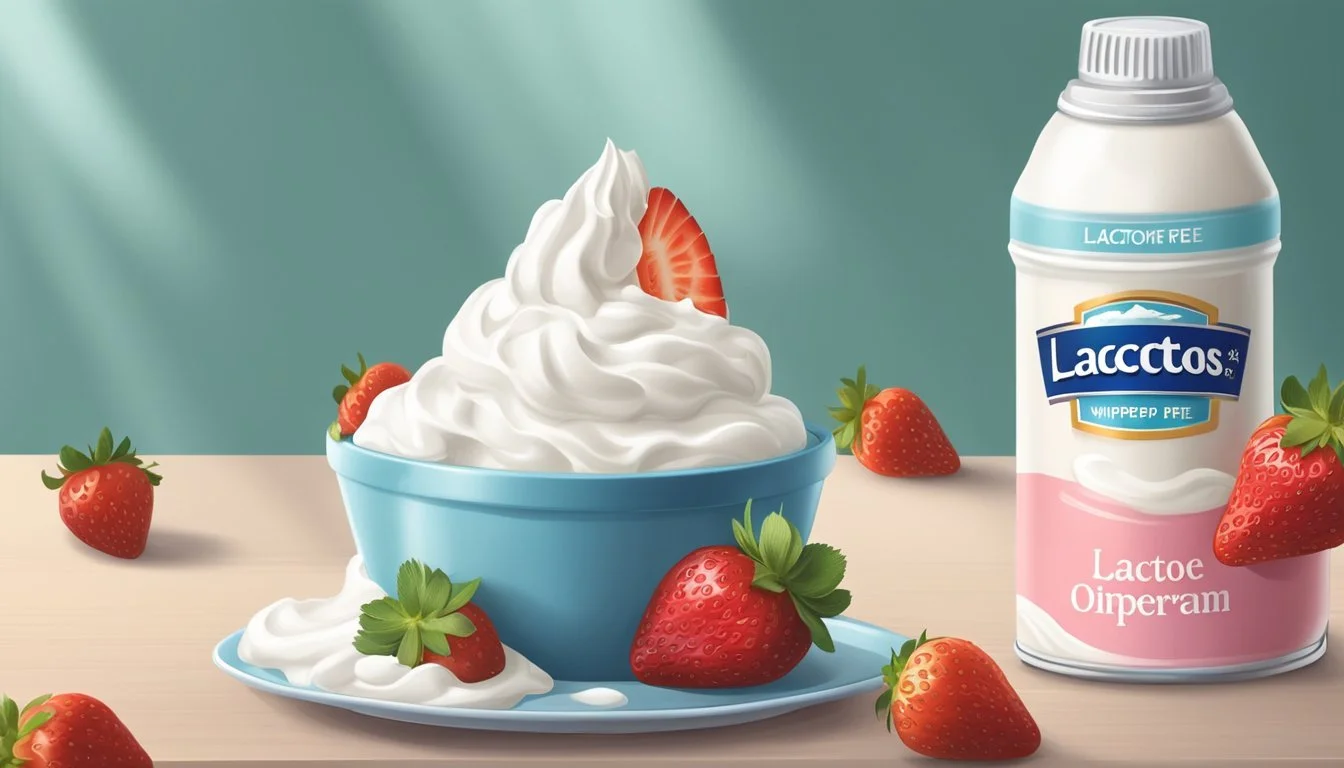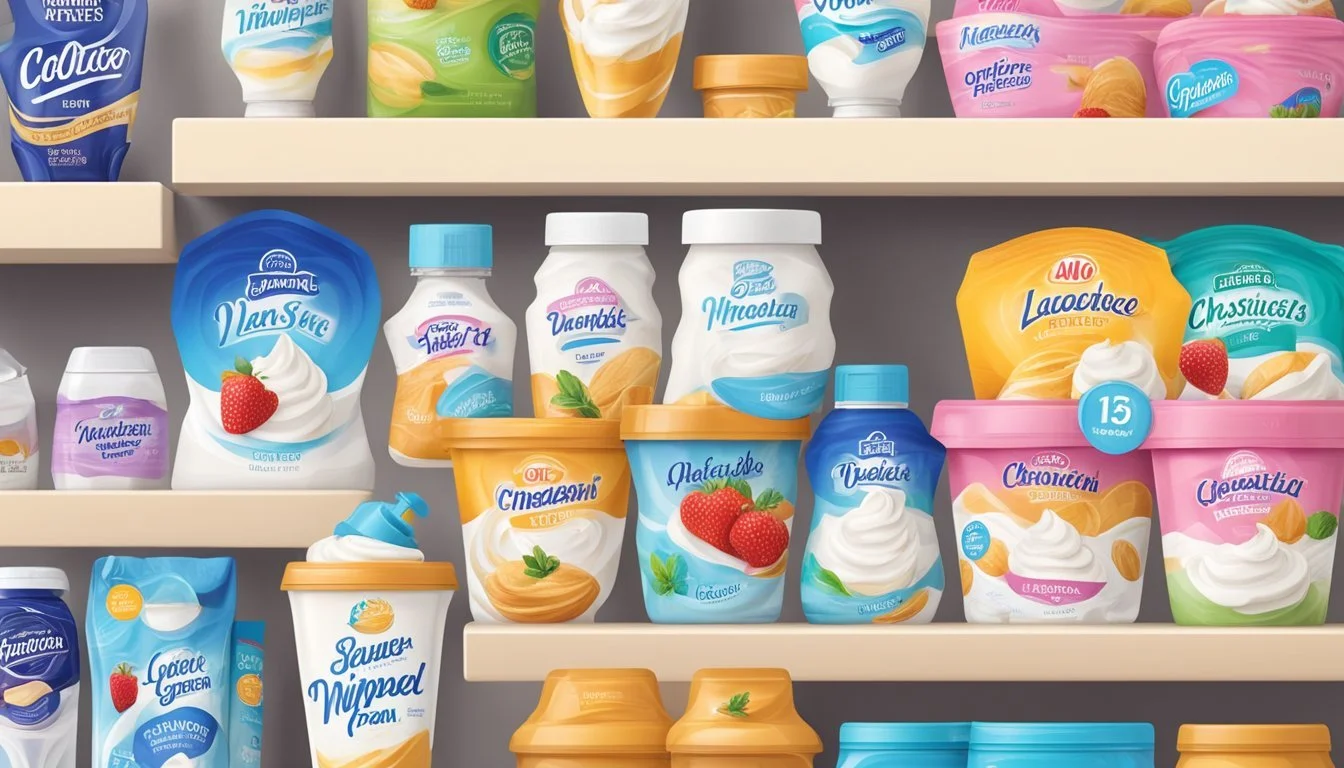What Are Some Lactose-Free Whipped Cream Options?
Your Guide to Dairy-Free Delights
Lactose intolerance and dietary preferences are steering many consumers towards lactose-free alternatives to traditional dairy products. Whipped cream, a popular topping for desserts and beverages, typically contains dairy and is off-limits to those avoiding lactose. However, an array of lactose-free whipped cream options has become available, catering to both the lactose-intolerant and those adhering to a dairy-free or vegan diet. These alternatives maintain the creamy texture and taste that whipped cream is known for, without the discomfort that lactose can cause.
An increasing number of brands are offering products that fit into a dairy-free lifestyle, introducing items like Cocowhip™ and other non-dairy whipped toppings. These products are crafted from coconut milk, almond milk, and other plant-based ingredients to create a whipped cream experience without the use of traditional cow's milk. Several of these options are not only lactose-free but also fully vegan, ensuring no animal products are used in their creation.
These lactose-free whipped cream options come in various formats, including ready-to-use tubs and cans, as well as recipes for homemade versions. Homemade recipes often utilize the cream from a can of coconut milk, which is chilled, separated, and whipped with sweeteners and flavor enhancements like vanilla extract. Store-bought varieties offer the convenience of a pre-whipped product, similar to traditional whipped cream, allowing consumers to easily complement their desserts or beverages with a dairy-free topping.
Understanding Lactose-Free Whipped Cream
Lactose-free whipped cream alternatives are vital for those with lactose intolerance or dairy allergies. These options ensure that everyone can enjoy the richness of whipped cream without gastrointestinal discomfort or allergic reactions.
Defining Dairy-Free and Lactose-Free
Dairy-Free refers to products that contain no dairy ingredients whatsoever, including lactose, whey, and casein. Lactose-Free, on the other hand, specifically means the absence of lactose, a sugar present in milk. Products can be lactose-free yet still contain other dairy components. Lactose-free whipped creams are an indulgence for those who are lactose intolerant but not necessarily allergic to other dairy components.
Health Benefits
For individuals who are lactose intolerant or follow a vegan lifestyle, choosing lactose-free whipped cream can offer health benefits. These include avoiding the bloating, gas, and diarrhea commonly associated with lactose consumption. Additionally, lactose-free products may be lower in cholesterol and saturated fats, contributing to better heart health.
Considerations for Allergies
Those with dairy allergies should choose dairy-free whipped cream options, as lactose-free products may still contain allergenic proteins like casein. It is critical to read labels carefully to ensure the product is a safe option. For a completely non-dairy and allergenic-safe choice, one can opt for whipped creams made from coconut cream or other plant-based alternatives.
Popular Brands and Products
For individuals looking to indulge in whipped cream without lactose, the market offers a plethora of dairy-free alternatives. These products cater to different dietary preferences and are made from various plant-based sources like coconut, almond, oat, and soy.
Coconut-Based Whipped Creams
Coconut-based whipped creams have a rich, creamy texture and are widely appreciated for their natural sweetness. So Delicious Cocowhip is a favorite for its light, fluffy consistency, available in both Original and Lite versions. Another acclaimed option is Nature’s Charm Coconut Whipping Cream, which is known for its thick and smooth consistency, serving as an excellent topping for desserts.
Almond and Oat-Based Whipped Creams
The popularity of almond milk and oat-based whipped creams is rising due to their creamy texture and neutral taste. One of the key players is 365 Oat-Based Whipped Topping, an in-house brand of a well-established grocery chain that offers a vegan-friendly topping perfect for pies and beverages. Califia Farms Heavy Whip is an almond milk-based alternative that provides a full-bodied texture suitable for culinary applications requiring heavy whipping cream.
Soy-Based Whipped Creams
Soy-based whipped creams offer a high-protein alternative to traditional whipped cream. Soyatoo is a well-known brand offering soy-based toppings that provide a light and airy texture. They are a suitable option for those who prefer soy over nut or coconut-based products.
Store-Bought Vegan Whipped Toppings
Store-bought vegan whipped toppings have gained popularity as readily available dairy-free options. Truwhip Vegan and Truwhip Vegan Whipped Topping stand out for their dedication to being 100% vegan and their use of natural ingredients. These products have a satisfyingly creamy texture, making them a convenient dairy-free alternative for a variety of desserts.
Homemade Whipped Cream Alternatives
Creating lactose-free whipped cream at home allows individuals to tailor flavors and textures to their preferences using plant-based ingredients. These alternatives are not only suitable for those with lactose intolerance but also cater to vegan dietary choices.
Coconut Whipped Cream Recipes
Coconut whipped cream is a popular dairy-free alternative made using full-fat coconut milk or coconut cream. After chilling a can of coconut milk overnight, one separates the solidified coconut cream from the liquid and whips it until it becomes fluffy. To enhance the flavor, one can add vanilla extract, and adjust sweetness with healthy options such as maple syrup or other sweeteners.
Ingredients:
Full-fat coconut milk or coconut cream (chilled)
Vanilla extract
Sweetener of choice (e.g., maple syrup)
Aquafaba Whipped Cream Recipes
Aquafaba, the liquid from a can of chickpeas, can be transformed into an airy and light whipped cream. It requires whipping the aquafaba with a hand or stand mixer until stiff peaks form, then incorporating a sweetener and optionally, vanilla extract, to taste. This whipped cream alternative is incredibly light and can be a healthier substitute in many recipes.
Ingredients:
Aquafaba
Sweetener of choice
Vanilla extract (optional)
Other Plant-Based Whipped Creams
For other homemade vegan whipped cream options, one might use soy milk mixed with a stabilizer like cocoa powder to thicken the blend. Ingredients are whipped together until the desired consistency is reached. Adjust sweetness with various sweeteners according to one's dietary needs and taste preference.
Ingredients:
Soy milk or other plant-based milks
Cocoa powder or other thickeners
Sweetener of choice
Using Lactose-Free Whipped Cream
Lactose-free whipped cream can be a versatile substitute in various culinary applications, from sweetening desserts to enhancing beverages and even appearing in savory dishes, while maintaining that fluffy, creamy texture that is traditionally loved.
Desserts and Sweet Treats
Lactose-free whipped cream shines brightest in the realm of desserts, where it can be used just like traditional whipped cream. It's an invaluable component in dairy-free desserts such as cakes, where it's often employed as both frosting and garnishing. Incorporating whipped coconut cream in pies adds richness without lactose; notably, pumpkin pie is a classic that benefits from a dollop of dairy-free whipped topping. For trifles, which rely on layered textures, lactose-free whipped cream can provide the necessary creamy layers without compromising on taste or consistency.
Pancakes and waffles: A spoonful of lactose-free whipped cream can be a delightful addition.
Vegan chocolate whipped cream: A perfect choice for those seeking a fully vegan option, this cream adds a luxe element to any dessert.
Beverages and Smoothies
Whipped cream isn't only for eating—it's also a sumptuous addition to drinks. Dairy-free variations transform hot chocolate into a comforting, lactose-free indulgence, delivering the same visual appeal and mouthfeel as their dairy counterparts. Similarly, smoothies may be crowned with a swirl of fluffy lactose-free whipped cream, turning an everyday beverage into a special treat. They are not only lactose-free but also suitable for those following a vegan lifestyle.
Whipped coconut cream: With a hint of tropical flavor, this cream pairs wonderfully with fruit-flavored beverages.
Savory Applications
While less common, lactose-free whipped cream can have its place in savory settings as well. Situations calling for a rich, creamy texture without added sweetness can benefit from unsweetened whipped cream alternatives. These alternatives can add an unexpected lightness and are compatible with lactose-free and vegan diets.
Garnishing: A visually appealing finish for soups or purées.
Tips for Preparation and Use
When creating lactose-free whipped cream, careful preparation and proper use of equipment are crucial to ensure a successful outcome. The right techniques help to achieve the perfect texture and consistency, as well as to maximize the whipped cream's shelf life.
Selecting the Right Equipment
For optimal texture and ease, one should utilize a stand mixer or an electric hand mixer. These appliances provide the power and consistency needed to whip cream to the desired stiffness. While a hand mixer can be used, it requires more effort and time.
Stand Mixer: Ideal for larger quantities, less manual effort.
Electric Hand Mixer: More control and suitable for smaller batches.
Hand Mixer: Feasible but labor-intensive.
Achieving Desired Consistency
Achieving the right consistency is essential for texture and taste. For dairy-free options like coconut whipped cream, one must start with the cream—separating it from the liquid in the can—and chilling it beforehand to ensure a higher fat content, which aids in stability.
Begin with chilled coconut cream for stiffness.
Whisk using medium-high speed to prevent overbeating.
Add a thickener if the cream is too soft; sift in powdered sugar for sweetness and structure.
Use coconut oil judiciously if a firmer consistency is desired.
Storing and Longevity
Proper storage is key to extending the life of dairy-free whipped cream. It should be stored in an airtight container to prevent it from absorbing other flavors or moisture from the refrigerator.
Refrigerate: Store the whipped cream in a covered container for up to 3 days.
Avoid Freezing: Freezing can alter the texture and cause separation.
Lite Variations: While lighter in fat content, "lite" dairy-free whipped cream can suffer in terms of stability and may not hold peaks as firmly—best consumed soon after whipping.
Addressing Common Concerns and Misconceptions
In exploring lactose-free whipped cream options, consumers may confront several concerns and misconceptions. This section addresses the differences between lactose intolerance and dairy allergies, health-related myths, and the nutritional content of lactose-free alternatives.
Lactose vs. Dairy Intolerance
Lactose intolerance is a condition where the body lacks the enzyme lactase, which is necessary to break down lactose, the sugar found in milk. Those with lactose intolerance experience digestive discomfort after consuming dairy. In contrast, a dairy allergy is an immune response to milk protein, which can cause more severe reactions beyond gastrointestinal distress, including rash, hives, or respiratory issues.
Health Misconceptions
Some believe that lactose-free products are inherently healthier, but this isn't always the case. Lactose-free whipped creams may contain comparable fat content to their lactose-containing counterparts and can include common ingredients such as oils and emulsifiers to mimic the texture and taste of traditional whipped cream.
Nutritional Content Analysis
When analyzing the nutritional value of lactose-free whipped cream options, it's important to review their content critically.
Nutrient Consideration in Lactose-Free Options Calories Can be similar to dairy-based whipped creams. Fat Often made with vegetable fats, which vary in healthfulness. Protein Generally lower in lactose-free versions due to lack of milk protein. Calcium and Vitamins May be fortified to match nutritional value of dairy.
Consumers with allergies should confirm that the product is free from all dairy components, not just lactose, to avoid allergic reactions.
Places to Purchase and Accessibility
Finding lactose-free whipped cream options is more convenient than ever before. Consumers have a variety of platforms where they can purchase these dairy-free alternatives, ranging from online shops to local health food stores, and even mainstream grocery chains.
Online Shopping Options
Shoppers looking for the widest selection of vegan whipped cream brands will often find that online shopping platforms provide the greatest variety. Brands like Whipt and Country Crock offer plant-based whipped creams that can be easily ordered online. Specialty e-commerce sites and larger online retailers often sell these items in bulk, which may be more cost-effective.
Local Health Food Stores
Local health food stores, including Sprouts Farmers Market, are excellent sources for lactose-free whipped cream. These stores typically focus on health-conscious consumers and are more likely to carry a diversity of dairy-free products, including whipped cream alternatives. In-store staff can also offer insights into the most popular and recommended options.
Mainstream Grocery Stores
Mainstream grocery stores are increasingly stocking vegan alternatives to meet the growing demand for dairy-free products. Chains like Trader Joe's have been noted by resources like Go Dairy Free for providing a selection of dairy-free toppings. Here, shoppers can often find brands such as Whipt alongside other dairy alternatives in the refrigerated section.







